Museum of Fine Arts, Boston
April 7 through August 4, 2019
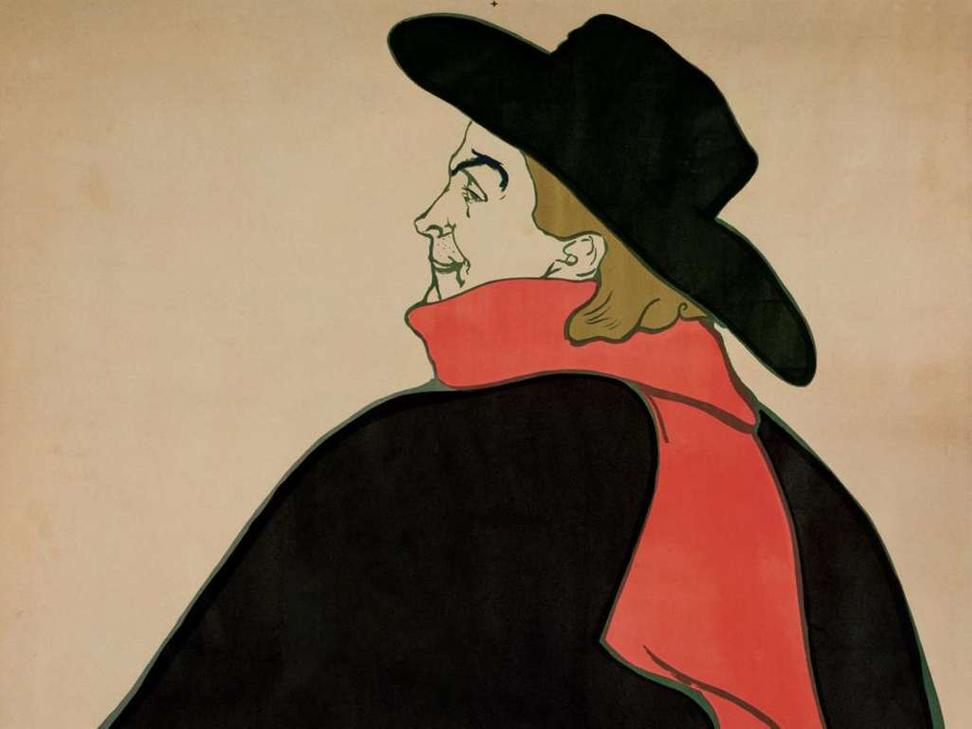
Henri de Toulouse-Lautrec, Aristide Bruant in His Cabaret (detail), 1893. Poster, color lithograph printed in black, red, green, and gray, proof before letters. Otis Norcross Fund. Museum of Fine Arts, Boston.Paris was the center of nightlife and spectacle in the late 19th century, a moment immortalized in evocative posters, prints and paintings by Henri de Toulouse-Lautrec (1864–1901). The artist’s extraordinary attention to the performers, dancers and actors of Montmartre—the heart of the city’s bohemian nightlife—is the focus of Toulouse-Lautrec and the Stars of Paris, on view in the Museum of Fine Arts, Boston's Ann and Graham Gund Gallery from April 7 through August 4, 2019.
The exhibition of approximately 200 works is a collaboration between the Museum of Fine Arts, Boston (MFA), and the Boston Public Library (BPL), drawing on both institutions’ extensive holdings of rarely displayed graphic works by Toulouse-Lautrec. It also includes a selection of loans from the Harvard Art Museums, the Houghton Library of Harvard University and the Metropolitan Museum of Art, as well as local private collectors.
Toulouse-Lautrec and the Stars of Paris explores the
artist’s enthusiastic participation in the celebrity culture of his day
and how, to a remarkable degree, he defined it for generations to
follow. In addition to his famous lithographic prints and posters, which
distilled the defining gestures, costumes and expressions of “les
stars” of the day into instantly recognizable images, the exhibition
features never-before-displayed early drawings and a selection of
paintings by Toulouse-Lautrec.
Works by his contemporaries, including Pierre Bonnard, Mary Cassatt, Edgar Degas, John Singer Sargent and James Jacques Joseph Tissot, are also incorporated throughout the galleries, as well as recently restored period films, music, instruments and fashion accessories.

The exhibition is accompanied by an illustrated catalogue produced by MFA Publications and a range of public programming offered at the Museum and the BPL’s Central Library and 25 neighborhood branches.
“We are proud to partner with the Boston Public Library to bring together these two rich collections of work by Henri de Toulouse-Lautrec. It’s exciting to be able to bring to life the spectacles of modern Paris, and offer the public unprecedented access to works of art in new ways,” said Matthew Teitelbaum, Ann and Graham Gund Director of the MFA. “This has been a true collaboration, and we’re extremely grateful to all of our colleagues at the BPL.”
The MFA’s conservation team undertook the preparation and framing of pieces from the BPL’s collection for the exhibition. Nine oversized posters were also sent for extensive conservation treatment, framing and digitization at the Northeast Document Conservation Center (NEDCC) in Andover; this work was jointly funded by the MFA and the Associates of the Boston Public Library. Five of these posters are on view at the Museum in Toulouse-Lautrec and the Stars of Paris, while the remaining four are displayed at the BPL’s Central Library in Copley Square. Additionally, the BPL’s complete collection of more than 350 works by Toulouse-Lautrec has been digitized and is available on digitalcommonwealth.org.
“Boston Public Library is thrilled to take our partnership with the Museum of Fine Arts to a new level, collaborating on this joint exhibition featuring the works of Henri de Toulouse-Lautrec and making them widely accessible to the public,” said David Leonard, President of the Boston Public Library. “This is not just a superb example of Boston’s cultural institutions working together, but also helps us unlock our vast historical collections for the enjoyment of all. This exhibition and its programming allow us to explore themes at the intersection of art and celebrity across the centuries.”
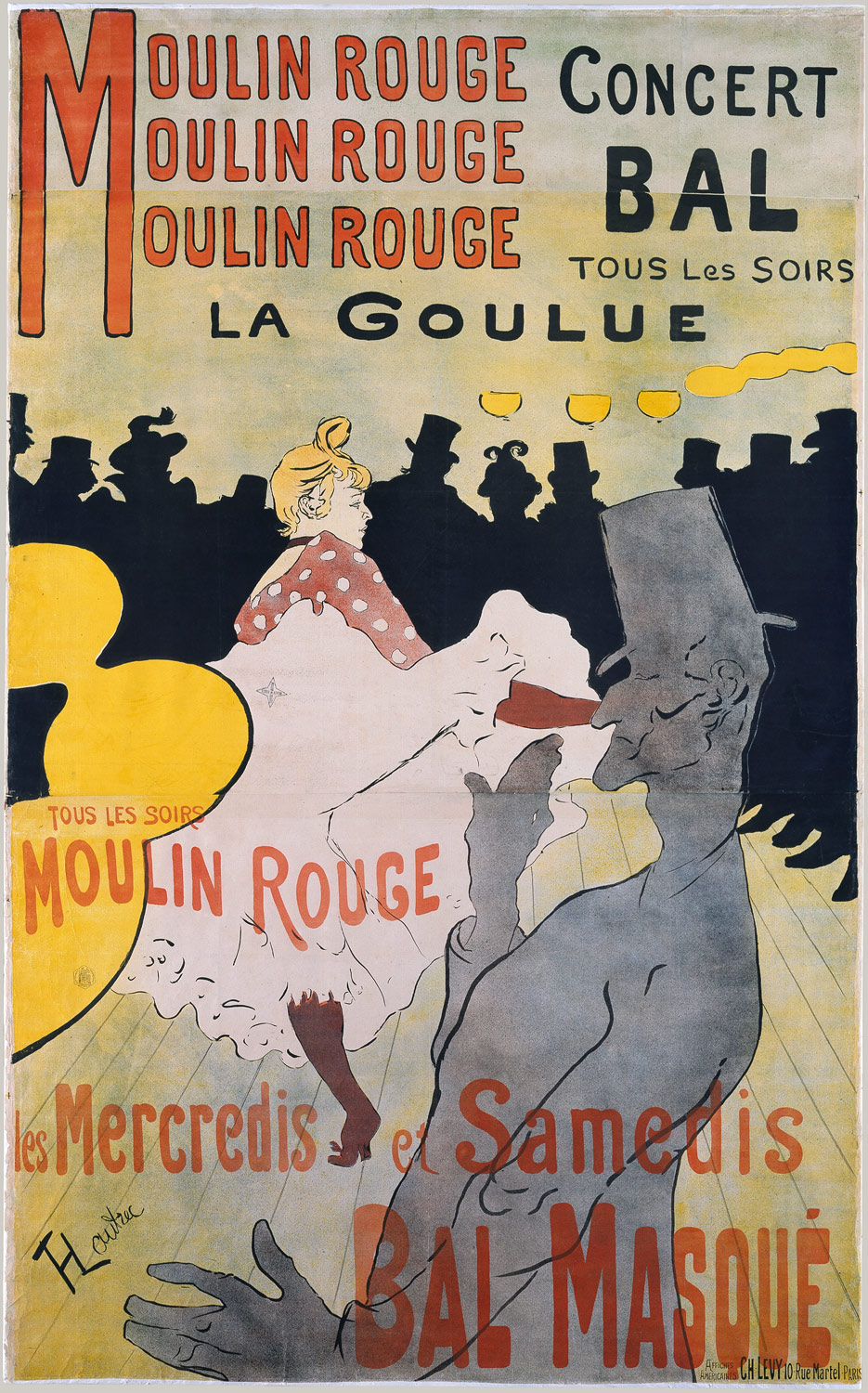
Toulouse-Lautrec and the Stars of Paris opens with a selection of key works by Toulouse-Lautrec, including the artist’s first poster: the large and dramatic Moulin Rouge: La Goulue (1891, Metropolitan Museum of Art). Commissioned by the infamous dance hall Le Moulin Rouge, it marked Toulouse-Lautrec’s entry into the foray of advertising and celebrity culture and set a new standard for poster design, radically synthesizing artistic devices from a range of sources, including shadow theater and Japanese woodblock prints.

The introductory section also highlights Eldorado: Aristide Bruant in his Cabaret (1892, BPL), the first poster to include the self-designed monogram, HTL (for Henri de Toulouse-Lautrec), which the artist included on all of his subsequent posters. The monogram essentially functioned as a logo and linked Toulouse-Lautrec’s fame with the celebrities he depicted. Ultimately, such prints and posters, which could be seen all over Paris, established Toulouse-Lautrec’s reputation as one of the great printmakers of the late 19th century.
“The exhibition addresses the roots of a major aspect of public life today: celebrity culture and the power of images,” said Helen Burnham, Pamela and Peter Voss Curator of Prints and Drawings. “It also offers a remarkable opportunity to experience the depth and quality of Boston’s holdings of works by Toulouse-Lautrec. Few cities could mount a show of this nature without numerous outside loans. We have been able to put together a focused perspective on a critical aspect of an innovative artist’s career by combining two great collections and inviting the participation of a handful of important nearby supporters.”
Following the introduction, Toulouse-Lautrec and the Stars of Paris is organized into five thematic sections: A Creative Life, Paris by Day and Night, Behind the Scenes, The Show and The Stars.
A Creative Life acquaints visitors with Toulouse-Lautrec, his artistic journey and his keen ability to record an impression with a few quick strokes on paper. He began drawing as a boy, encouraged by his father and uncles, all of whom were talented amateur artists. His early studies—many of which are exhibited for the first time—focused on horses and people, subjects that would fascinate him throughout his life. After moving to Paris from the south of France in 1882, he studied with academically trained painters, but soon became interested in the avant-garde—especially the work of Edgar Degas,

whose Racehorses at Longchamp (1871, possibly reworked in 1874, MFA) is on view.
Three early mature paintings by Toulouse-Lautrec are also featured, two of which are shown together for the first time in many years:

the MFA’s At the Café La Mie (about 1891)

and The Hangover (Suzanne Valadon) (1887–89), on rare loan for three months from the Harvard Art Museums.
The works in this section illustrate the artist’s experimentation with a variety of media, including lithography, which became one of his main vehicles for expression. A lithographic stone used by Toulouse-Lautrec is shown alongside two of the prints (or “impressions”) that it produced, offering insight into the artist’s technique.
Paris by Day and Night explores the city’s changing landscape during Toulouse-Lautrec’s lifetime. In the second half of the 19th century, old neighborhoods were razed to make way for new buildings, department stores, grand boulevards, omnibus transportation and public parks. By day, Paris bustled with fashionable residents, while by night, it earned its title as the City of Lights, with new forms of electric lightning and entertainment.
Excerpts from recently restored films by the Lumière Brothers (courtesy of Institut Lumière) show views of Paris around 1900, which are also depicted in paintings of modern life by Pierre Bonnard, Mary Cassatt, Robert Henri and James Jacques Joseph Tissot, as well as prints by Edgar Degas, Maxime Lalanne, Auguste Lepère, Henri Rivière and Jacques Villon.
Additionally, this section includes Toulouse-Lautrec’s advertising posters, which promoted a variety of products, services and venues, from paper confetti and bicycle chains to photography studios and literary magazines.
Behind the Scenes highlights
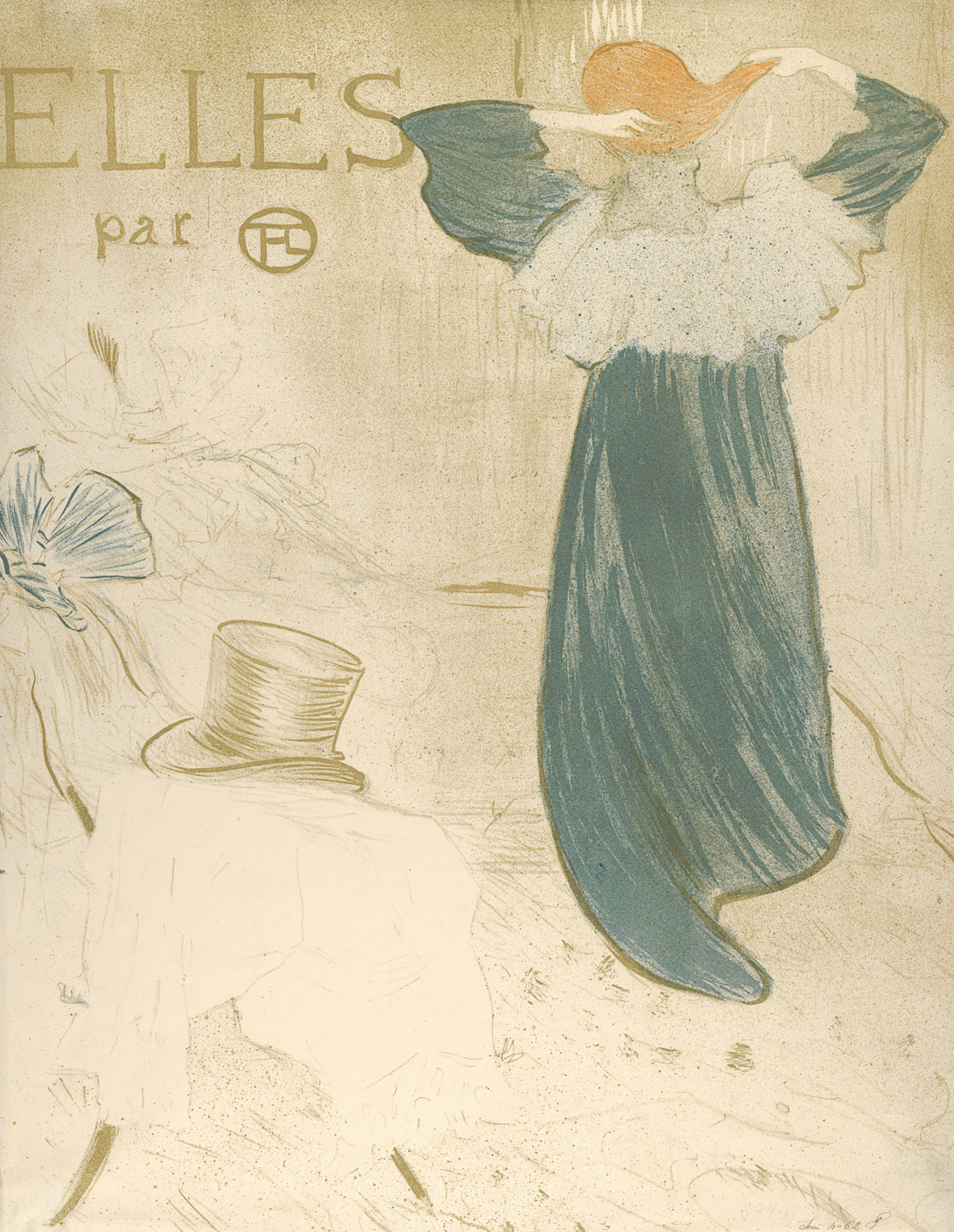
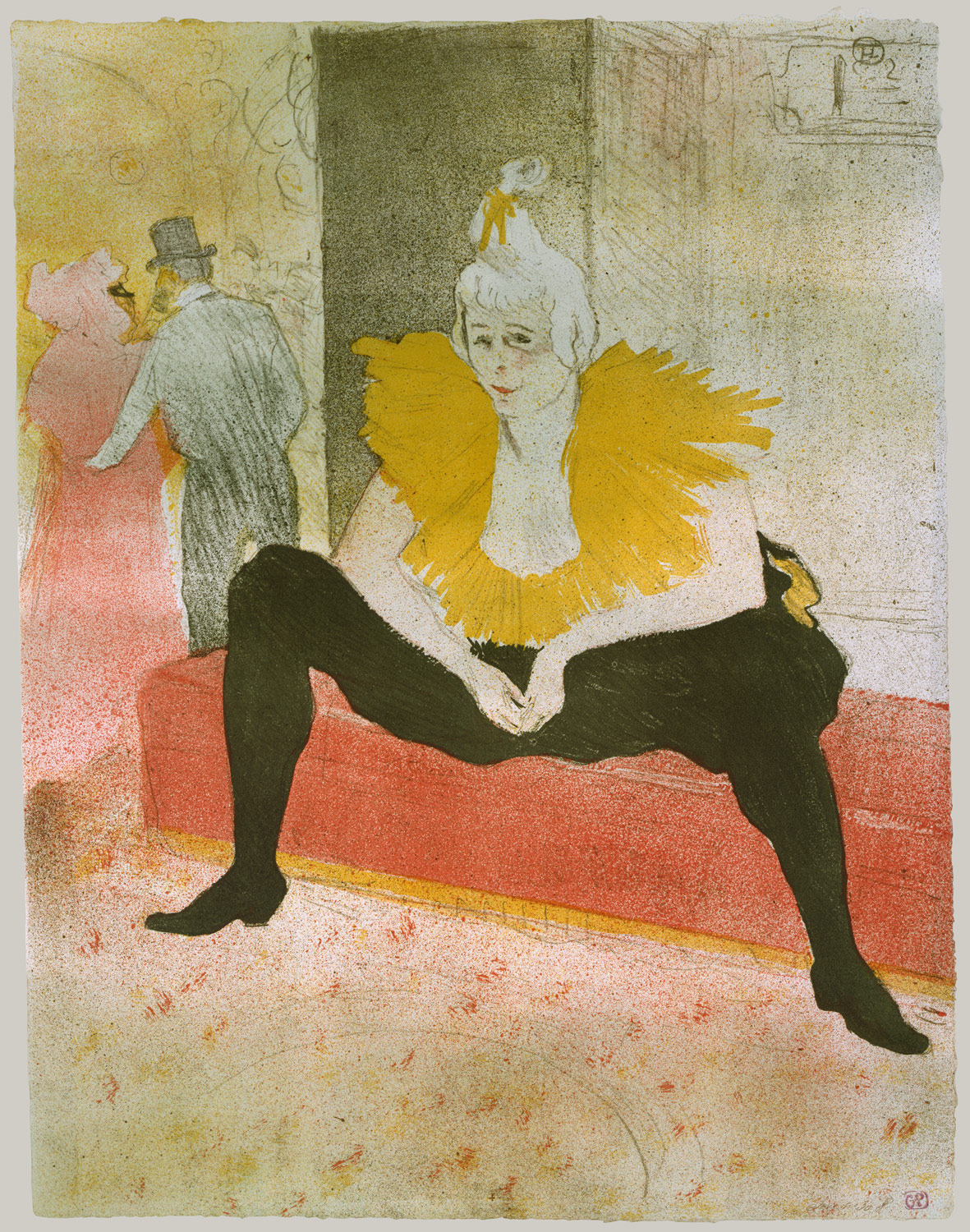
the Elles portfolio (1896, BPL), one of the great achievements of Toulouse-Lautrec’s career. Shown in its entirety and in incredible condition, the series chronicles with unusual sensitivity the daily habits of women living in a Parisian brothel. Toulouse-Lautrec himself lived in brothels for extended periods of time, befriending the women who lived there and sketching them as they engaged in mundane activities like bathing, grooming or eating breakfast.
Additional lithographs on view in this section also depict various moments—from intimate scenes to relatively public scenarios—taking place in what Parisians described as a “half world” (or demi-monde) of sex workers, mistresses and courtesans in their city.
The Show immerses visitors in the nightlife of fin-de-siècle Paris, with images of performers and song sheets for period music. Among the highlights in this section are Toulouse-Lautrec’s depictions of

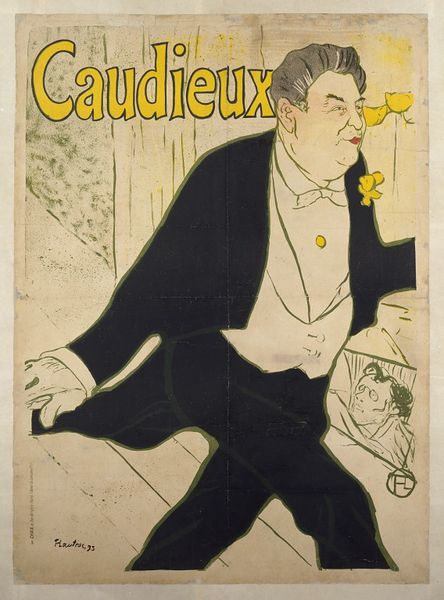
Caudieux, the “human cannonball,”
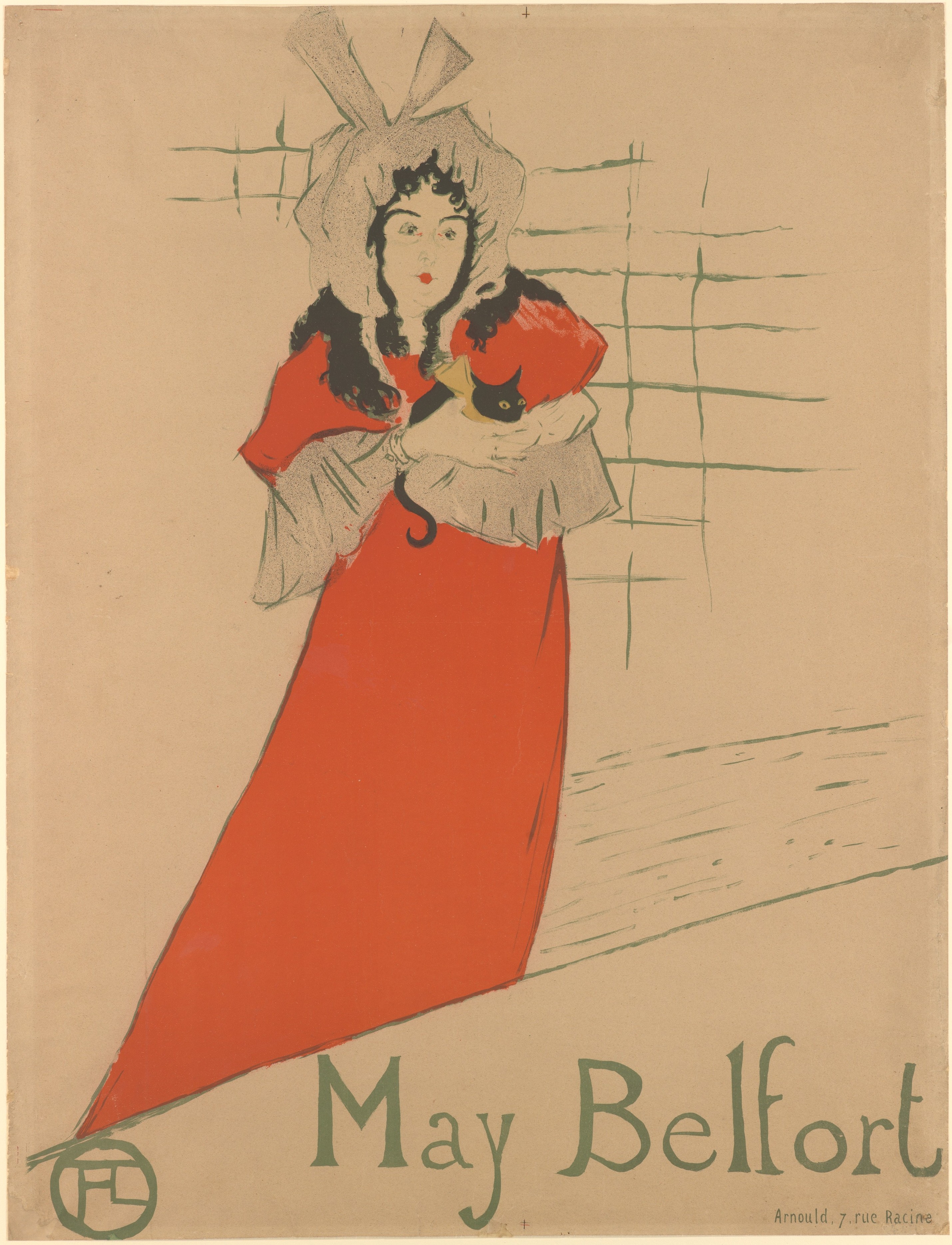
and May Belfort, an Irish songstress known for her signature baby-doll costume and black cat.
Also on view are

John Singer Sargent’s Rehearsal of the Pasdeloup Orchestra at the Cirque d’Hiver(about 1879–80, MFA)

and Pablo Picasso’s Stuffed Shirts (Les Plastrons) (1900, MFA), painted during the artist’s brief Toulouse-Lautrec-influenced phase.
The soundtrack for this gallery features a soundtrack that includes the famous Can-Can, from Orpheus in the Underworld, composed by Bedrich Smetana, Jacques Offenbach, Modest Mussorgsky and Pyotr Ilyich Tchaikovsky.
The exhibition culminates with The Stars, an in-depth exploration of six Montmartre celebrities who were made famous by Toulouse-Lautrec: cabaret star Yvette Guilbert; actor, painter and sculptor Sarah Bernhardt; Moulin Rouge dancer Jane Avril; opera performer Marcelle Lender; nightclub owner and performer Aristide Bruant; and dancer Loïe Fuller.
This section features popular works by Toulouse-Lautrec,

including three rare impressions (two color separations and a final proof) of Le Divan Japonais (1893, MFA), which depicts Yvette Guilbert on stage and Jane Avril as a spectator;

Marcelle Lender (1895, MFA), one of his most technically complex lithographs;

and two versions of Aristide Bruant in his Cabaret (1893, MFA and BPL), one of his most successful and iconic poster designs.
Six rare prints of Loïe Fuller (1893, MFA, BPL and Metropolitan Museum of Art) are reunited in this gallery, each impression featuring a unique combination of colors enhanced with gold or silver powder to mimic the ever-changing visual effects of the dancer’s performances.
A recently restored, hand-colored film by the Lumière Brothers (courtesy of Institut Lumière) demonstrates the Serpentine Dance, which was invented by Fuller and performed by manipulating lightweight wands sewn into the hem of a voluminous skirt to create a swirling mass of fabric.
The Stars also includes a shadow theater produced to re-create the experience of attending the 1900 World’s Fair; a kaleidoscopic card that creates illusions of movement and changing colors; two “hold-to-light postcards” that can be illuminated by visitors; and a case of chic accessories from fin-de-siècle Paris.
The exhibition is accompanied by the catalogue Toulouse-Lautrec and the Stars of Paris (April 2019, MFA Publications), written by curator Helen Burnham with contributions by Mary Weaver Chapin, Curator of Prints and Drawings at the Portland Art Museum, and Joanna Wendel, Morse Curatorial Research Fellow in the Department of Prints and Drawings at the MFA. Lavishly illustrated with reproductions of iconic images and rarely seen sketches, the volume focuses on six performers depicted by Toulouse-Lautrec—Yvette Guilbert, Jane Avril, Aristide Bruant, Marcelle Lender, May Belfort and Loïe Fuller—and explores how they collaborated with the artist in exploiting new media to create stardom.

Also:

Works by his contemporaries, including Pierre Bonnard, Mary Cassatt, Edgar Degas, John Singer Sargent and James Jacques Joseph Tissot, are also incorporated throughout the galleries, as well as recently restored period films, music, instruments and fashion accessories.

The exhibition is accompanied by an illustrated catalogue produced by MFA Publications and a range of public programming offered at the Museum and the BPL’s Central Library and 25 neighborhood branches.
“We are proud to partner with the Boston Public Library to bring together these two rich collections of work by Henri de Toulouse-Lautrec. It’s exciting to be able to bring to life the spectacles of modern Paris, and offer the public unprecedented access to works of art in new ways,” said Matthew Teitelbaum, Ann and Graham Gund Director of the MFA. “This has been a true collaboration, and we’re extremely grateful to all of our colleagues at the BPL.”
The MFA’s conservation team undertook the preparation and framing of pieces from the BPL’s collection for the exhibition. Nine oversized posters were also sent for extensive conservation treatment, framing and digitization at the Northeast Document Conservation Center (NEDCC) in Andover; this work was jointly funded by the MFA and the Associates of the Boston Public Library. Five of these posters are on view at the Museum in Toulouse-Lautrec and the Stars of Paris, while the remaining four are displayed at the BPL’s Central Library in Copley Square. Additionally, the BPL’s complete collection of more than 350 works by Toulouse-Lautrec has been digitized and is available on digitalcommonwealth.org.
“Boston Public Library is thrilled to take our partnership with the Museum of Fine Arts to a new level, collaborating on this joint exhibition featuring the works of Henri de Toulouse-Lautrec and making them widely accessible to the public,” said David Leonard, President of the Boston Public Library. “This is not just a superb example of Boston’s cultural institutions working together, but also helps us unlock our vast historical collections for the enjoyment of all. This exhibition and its programming allow us to explore themes at the intersection of art and celebrity across the centuries.”

Toulouse-Lautrec and the Stars of Paris opens with a selection of key works by Toulouse-Lautrec, including the artist’s first poster: the large and dramatic Moulin Rouge: La Goulue (1891, Metropolitan Museum of Art). Commissioned by the infamous dance hall Le Moulin Rouge, it marked Toulouse-Lautrec’s entry into the foray of advertising and celebrity culture and set a new standard for poster design, radically synthesizing artistic devices from a range of sources, including shadow theater and Japanese woodblock prints.

The introductory section also highlights Eldorado: Aristide Bruant in his Cabaret (1892, BPL), the first poster to include the self-designed monogram, HTL (for Henri de Toulouse-Lautrec), which the artist included on all of his subsequent posters. The monogram essentially functioned as a logo and linked Toulouse-Lautrec’s fame with the celebrities he depicted. Ultimately, such prints and posters, which could be seen all over Paris, established Toulouse-Lautrec’s reputation as one of the great printmakers of the late 19th century.
“The exhibition addresses the roots of a major aspect of public life today: celebrity culture and the power of images,” said Helen Burnham, Pamela and Peter Voss Curator of Prints and Drawings. “It also offers a remarkable opportunity to experience the depth and quality of Boston’s holdings of works by Toulouse-Lautrec. Few cities could mount a show of this nature without numerous outside loans. We have been able to put together a focused perspective on a critical aspect of an innovative artist’s career by combining two great collections and inviting the participation of a handful of important nearby supporters.”
Following the introduction, Toulouse-Lautrec and the Stars of Paris is organized into five thematic sections: A Creative Life, Paris by Day and Night, Behind the Scenes, The Show and The Stars.
A Creative Life acquaints visitors with Toulouse-Lautrec, his artistic journey and his keen ability to record an impression with a few quick strokes on paper. He began drawing as a boy, encouraged by his father and uncles, all of whom were talented amateur artists. His early studies—many of which are exhibited for the first time—focused on horses and people, subjects that would fascinate him throughout his life. After moving to Paris from the south of France in 1882, he studied with academically trained painters, but soon became interested in the avant-garde—especially the work of Edgar Degas,

whose Racehorses at Longchamp (1871, possibly reworked in 1874, MFA) is on view.
Three early mature paintings by Toulouse-Lautrec are also featured, two of which are shown together for the first time in many years:

the MFA’s At the Café La Mie (about 1891)
and The Hangover (Suzanne Valadon) (1887–89), on rare loan for three months from the Harvard Art Museums.
The works in this section illustrate the artist’s experimentation with a variety of media, including lithography, which became one of his main vehicles for expression. A lithographic stone used by Toulouse-Lautrec is shown alongside two of the prints (or “impressions”) that it produced, offering insight into the artist’s technique.
Paris by Day and Night explores the city’s changing landscape during Toulouse-Lautrec’s lifetime. In the second half of the 19th century, old neighborhoods were razed to make way for new buildings, department stores, grand boulevards, omnibus transportation and public parks. By day, Paris bustled with fashionable residents, while by night, it earned its title as the City of Lights, with new forms of electric lightning and entertainment.
Excerpts from recently restored films by the Lumière Brothers (courtesy of Institut Lumière) show views of Paris around 1900, which are also depicted in paintings of modern life by Pierre Bonnard, Mary Cassatt, Robert Henri and James Jacques Joseph Tissot, as well as prints by Edgar Degas, Maxime Lalanne, Auguste Lepère, Henri Rivière and Jacques Villon.
Additionally, this section includes Toulouse-Lautrec’s advertising posters, which promoted a variety of products, services and venues, from paper confetti and bicycle chains to photography studios and literary magazines.
Behind the Scenes highlights


the Elles portfolio (1896, BPL), one of the great achievements of Toulouse-Lautrec’s career. Shown in its entirety and in incredible condition, the series chronicles with unusual sensitivity the daily habits of women living in a Parisian brothel. Toulouse-Lautrec himself lived in brothels for extended periods of time, befriending the women who lived there and sketching them as they engaged in mundane activities like bathing, grooming or eating breakfast.
Additional lithographs on view in this section also depict various moments—from intimate scenes to relatively public scenarios—taking place in what Parisians described as a “half world” (or demi-monde) of sex workers, mistresses and courtesans in their city.
The Show immerses visitors in the nightlife of fin-de-siècle Paris, with images of performers and song sheets for period music. Among the highlights in this section are Toulouse-Lautrec’s depictions of


Caudieux, the “human cannonball,”

and May Belfort, an Irish songstress known for her signature baby-doll costume and black cat.
Also on view are

John Singer Sargent’s Rehearsal of the Pasdeloup Orchestra at the Cirque d’Hiver(about 1879–80, MFA)

and Pablo Picasso’s Stuffed Shirts (Les Plastrons) (1900, MFA), painted during the artist’s brief Toulouse-Lautrec-influenced phase.
The soundtrack for this gallery features a soundtrack that includes the famous Can-Can, from Orpheus in the Underworld, composed by Bedrich Smetana, Jacques Offenbach, Modest Mussorgsky and Pyotr Ilyich Tchaikovsky.
The exhibition culminates with The Stars, an in-depth exploration of six Montmartre celebrities who were made famous by Toulouse-Lautrec: cabaret star Yvette Guilbert; actor, painter and sculptor Sarah Bernhardt; Moulin Rouge dancer Jane Avril; opera performer Marcelle Lender; nightclub owner and performer Aristide Bruant; and dancer Loïe Fuller.
This section features popular works by Toulouse-Lautrec,

including three rare impressions (two color separations and a final proof) of Le Divan Japonais (1893, MFA), which depicts Yvette Guilbert on stage and Jane Avril as a spectator;

Marcelle Lender (1895, MFA), one of his most technically complex lithographs;

and two versions of Aristide Bruant in his Cabaret (1893, MFA and BPL), one of his most successful and iconic poster designs.
Six rare prints of Loïe Fuller (1893, MFA, BPL and Metropolitan Museum of Art) are reunited in this gallery, each impression featuring a unique combination of colors enhanced with gold or silver powder to mimic the ever-changing visual effects of the dancer’s performances.
A recently restored, hand-colored film by the Lumière Brothers (courtesy of Institut Lumière) demonstrates the Serpentine Dance, which was invented by Fuller and performed by manipulating lightweight wands sewn into the hem of a voluminous skirt to create a swirling mass of fabric.
The Stars also includes a shadow theater produced to re-create the experience of attending the 1900 World’s Fair; a kaleidoscopic card that creates illusions of movement and changing colors; two “hold-to-light postcards” that can be illuminated by visitors; and a case of chic accessories from fin-de-siècle Paris.
 |
The exhibition is accompanied by the catalogue Toulouse-Lautrec and the Stars of Paris (April 2019, MFA Publications), written by curator Helen Burnham with contributions by Mary Weaver Chapin, Curator of Prints and Drawings at the Portland Art Museum, and Joanna Wendel, Morse Curatorial Research Fellow in the Department of Prints and Drawings at the MFA. Lavishly illustrated with reproductions of iconic images and rarely seen sketches, the volume focuses on six performers depicted by Toulouse-Lautrec—Yvette Guilbert, Jane Avril, Aristide Bruant, Marcelle Lender, May Belfort and Loïe Fuller—and explores how they collaborated with the artist in exploiting new media to create stardom.

Henri de Toulouse-Lautrec, Jane Avril, 1899. Poster, color lithograph. Albert H. Wiggin Collection. Boston Public Library.
Also:


